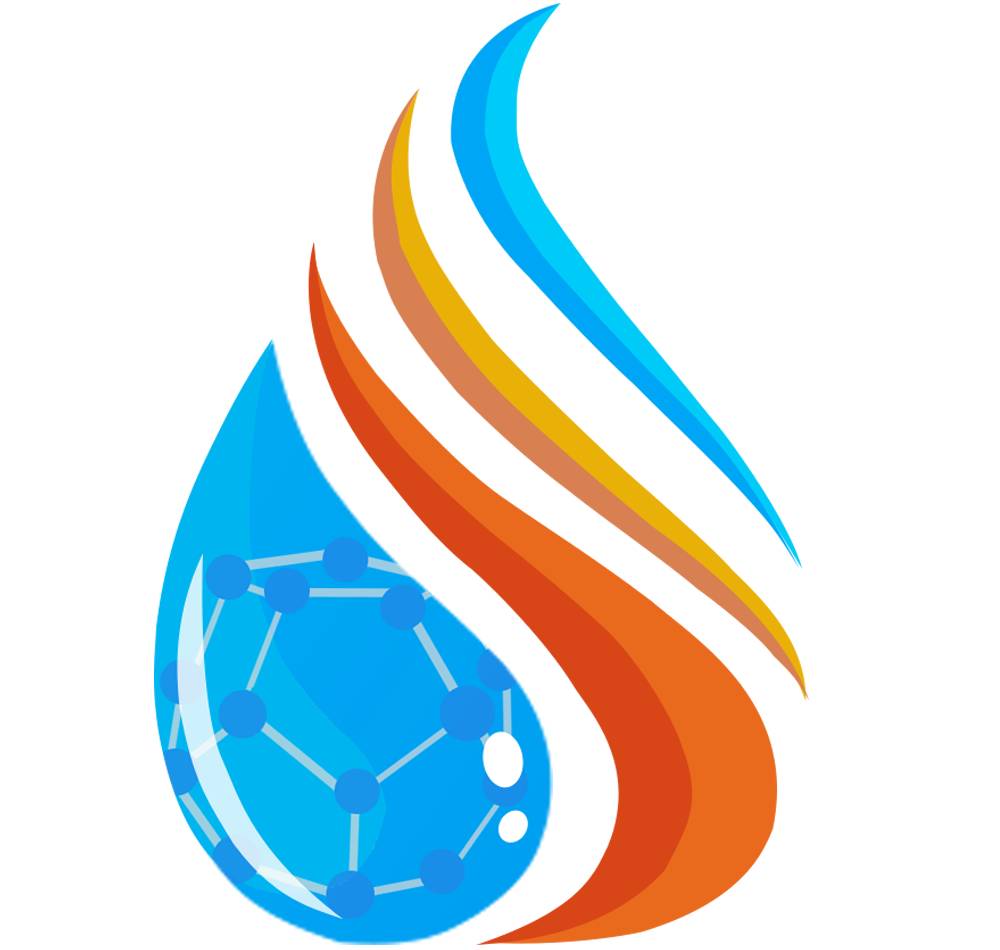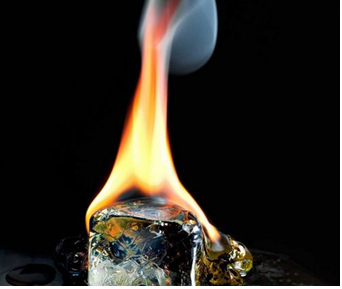《佳文速递》2025年第6期
 收藏
收藏
A review of fundamentals, challenges, prospects, and emerging trends in hydrate-based desalination
对水合物基淡化技术的基本要素、挑战、前景和新兴趋势的综述
发表时间:2025年6月12日
发表期刊:《npj Clean Water》
Ali Jalili, Georgios Kolliopoulos
Abstract: Hydrate-based desalination (HBD) has emerged as a promising technology among conventional desalination methods due to its low energy consumption, wide operating window with regards to total dissolved solids (TDS), and efficient water recovery. This paper provides an in-depth review of the fundamental properties of hydrates, including thermodynamic and kinetic aspects of their formation. Then, it delves into recent advancements in thermodynamic and kinetic hydrate promoters that aim to address HBD’s main challenge, which is the slow hydrate formation process. Subsequently, the review systematically examines environmental and toxicity concerns associated with chemicals used in HBD, addressing the growing demand for sustainable and biodegradable desalination solutions. Finally, a comparative analysis between HBD and conventional methods highlights its potential as an energy-efficient and selective desalination process poised to enhance sustainability within the water-energy-environment nexus.
Fig. 8 Overview of Desalination Technologies. Schematic representation of various desalination methods, illustrating key desalination technologies, including a multistage flash desalination (MSF), b multi-effect distillation (MED), c membrane distillation (MD), d fiber distillation (FD), e freeze desalination (FZD), f electrodialysis desalination (ED), g reverse osmosis (RO), and h hydrate-based desalination (HBD).
https://doi.org/10.1038/s41545-025-00484-0
Encapsulation of greenhouse gases in clathrate hydrates with insights into structure, energetics, chemical interactions, and environmental implications
以结构、能量学、化学相互作用和环境影响为视角,将温室气体封装在凝块水合物中
发表时间:2025年7月5日
发表期刊:《Scientific Reports》
Arun Ramamurthy, Giridhar Baburao, Abburi Jahnavi , Gopi Ragupathy
Abstract: The encapsulation of greenhouse gases (GHGs), such as CCl4, CF2Cl2, CH3Br, CH3Cl, CH4, CO, CO2, H2S, CH3F, N2O, NF3, O3, CF4, SF6, and SO2, within 512, 51262, and 51264 clathrate hydrate cages is being investigated in our study using Density Functional Theory (DFT). The smaller cages introduce steric constraints, leading to bond distortions and significant vibrational blue-shifts, while larger cages offer greater flexibility, resulting in red-shifts or minimal vibrational alterations. Intermediate-sized cages provide a nuanced balance between spatial limitations and structural stabilization. In the 513 cage, fewer guests exhibit red-shifts, whereas the larger 51262 and 51264 cages show more frequent red-shifts due to enhanced host–guest interactions. Natural Bonding Orbital (NBO) analysis reveals systematic changes in orbital contributions, occupancies, and anti-bonding interactions upon encapsulation, highlighting enhanced bond stabilization and a reduction in environmental reactivity. Atoms in Molecules (AIM) analysis further corroborates that encapsulated molecules exhibit strong bonding, remaining securely trapped and exhibiting minimal reactivity. Energy Decomposition Analysis (EDA) indicates that while smaller cages amplify interaction energies, they can also introduce substantial steric strain. In contrast, Non-Covalent Interaction (NCI) analysis highlights that the stability of hydrate cages is enhanced by stronger H-bonds and weaker van der Waals interactions as cage size increases. This underscores the potential of clathrate hydrates for encapsulating GHGs.
Fig. 1. Optimized geometries of 512, 51262, and 51264 hydrate clathrate cages without encapsulated GHGs.
https://doi.org/10.1038/s41598-025-08202-z
Study on the Effect of Hydrate Kinetic Inhibitors on the Structural Stability of Gas Hydrates and the Development of Fractures during Fluid Scouring
水合物动力学抑制剂对天然气水合物结构稳定性和流体冲刷过程中断裂发展的影响研究
发表时间:2025年6月16日
发表期刊:《Langmuir》
Yuchuan Qian, Tianhong Xu, Haiyuan Yao, Guangchun Song, Yuxing Li, Wuchang Wang, Xinran Yu, and Zheng Xu
Abstract: Flow blockage caused by hydrate deposition in deep-water-oil and gas pipelines seriously affects the safety of energy transmission. The structural stability of hydrates has a direct influence on the assessment of the development of hydrate deposition in pipelines, and the situation under hydrate-inhibitor-containing conditions may be more complicated. The effect of inhibitors on the structural stability of hydrate deposition under the action of flow scouring has not yet been clarified. The present study was based on the process of hydrate formation transformation under kinetic inhibitor-containing pectin conditions. The “concentration effect” of the pectin system causes the hydrate particle morphology to change from acicular to punctate. For the first time, the evolution model of microscopic fracture in the hydrate bed under the action of flow scouring in the high-mass transfer region was clarified. It was determined by microscopic dynamic data that there was reformation and filling of hydrate particles between the flow scouring fracture as well as growth and extension behavior, and a chain initiation-induced nucleation effect of hydrate particles was proposed. It was further found that pectin weakened the cohesion of hydrate particles, but when the pectin concentration was 0.25wt%, there was an abnormal increase in cohesion. Enhanced mass transfer due to structural destabilization of the hydrate layer may be responsible for the continued formation and transformation of pectin system hydrates at low shear rates. This study shows for the first time the correlation between inhibitor concentration and hydrate conversion from the perspective of structural stability of hydrate beds and provides a theoretical basis for the engineering application of green inhibitors.
Fig.6 Morphology of hydrate particles in the system with subcooling of 11 K and stirring rate of 300 rpm (a−f) and morphology statistics of 500 hydrate particles selected for a reaction time of about 1 h.
https://doi.org/10.1021/acs.langmuir.5c01654
CO2 and CO2-Rich Stream Hydrate Formation in Equilibrium with Brines in the Context of CO2 Injection
在注入二氧化碳的情况下二氧化碳和富含二氧化碳的水流与卤水平衡形成水合物
发表时间:2025年6月24日
发表期刊:《Journal of Chemical & Engineering Data》
Abdullahi Jibril, Rod Burgass, Antonin Chapoy, and Pezhman Ahmadi
Abstract: This work investigates the effects of salt solutions composed of NaCl, KCl, CaCl2, MgCl2, and Na2SO4 on hydrates of CO2 and CO2-rich streams. Measurements were made using the isochoric pressure-search method up to 43MPa between 251 and 292K. The obtained data were compared with predictions from a thermodynamic model using the Cubic-Plus-Association equation of state (EoS). In all cases, the hydrate-forming conditions were modeled with the solid solution theory of van der Waals and Platteeuw. A thermodynamic consistency analysis was performed by using linear regression fitting. The results indicate that the stabilities of CO2 and CO2-rich hydrates are significantly influenced by the concentration of salt solutions. These findings contribute to a better understanding of hydrate formation and dissociation conditions in CO2 and CO2-rich streams, particularly when injected into saline aquifers for Carbon Capture, Utilization, and Storage (CCS) applications.
Fig.1 Experimental setup for CO2 and CO2-rich stream hydrate
measurements.
https://doi.org/10.1021/acs.jced.5c00173
Phase Equilibrium Data and Phase Behavior in Formation Systems of Semiclathrate Hydrates Formed with Partly Asymmetric Quaternary Ammonium Salts under Methane, Carbon Dioxide, and Nitrogen Gas Pressure
部分不对称季铵盐在甲烷、二氧化碳和氮气压力下形成的半液态水合物的相平衡数据和形成体系中的相行为
发表时间:2025年6月18日
发表期刊:《Journal of Chemical & Engineering Data》
Sanehiro Muromachi, Satoshi Takeya, Kiyofumi Suzuki, and Norio Tenma
Abstract: Semiclathrate hydrates are water-based crystalline host–guest materials that consist of water and large ionic substances. To expand their unique functions, investigation into asymmetric quaternary ammonium salts, i.e., n-butyl chains of tetra-n-butylammonium (TBA or N4444 where N and 4 denote nitrogen and n-butyl group, respectively) cation is partly substituted by other groups, is necessary. In this study, we report the three-phase (gas-hydrate-liquid) equilibrium data in the systems of (N3444Cl or N4445Cl) + (CH4, CO2, or N2) + H2O up to 10MPa of the pressure, where 3 and 5 denote n-propyl and n-pentyl, respectively. A total of 99 equilibrium data sets were obtained with aqueous compositions with 0.1, 0.2, and 0.3 salt mass fractions. Both N3444Cl and N4445Cl promoted formation conditions of CH4, CO2, and N2 gas hydrates. N3444Cl partly acted as an inhibitor for pure CH4 and CO2 hydrates under some conditions and also showed polymorphic phase behavior. A comparison with the literature data for other ionic guests was made. The present findings help in understanding the phase behavior of the semiclathrate hydrates, which can be applied for further development of applications based on these materials.
Fig.2 Three-phase (gas−hydrate−liquid) equilibrium data measured in the systems of (N3444Cl or N4445Cl) + (CH4, CO2or N2) + H2O.The three-phase equilibrium data for pure water systems were together shown. Error bars are omitted for clarity as the measurement uncertainties are comparable to or smaller than the symbol size on this scale.
https://doi.org/10.1021/acs.jced.5c00019
 UPC-WY
UPC-WY

 DWOG-Hyd 2021
67帖子
DWOG-Hyd 2021
67帖子
 Haotian Wang
9帖子
Haotian Wang
9帖子
